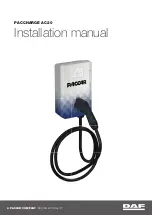
Make turns more slowly and wider
than normal. The trailer tracks a
smaller arc than your vehicle, and it
can hit or run over something the
vehicle misses. Allow more time and
distance for braking. Do not brake or
turn suddenly as this could cause the
trailer to jackknife or turn over.
The added weight, length, and
height of a trailer will affect your
vehicle’s handling and performance,
so driving with a trailer requires
some special driving skills and
techniques.
For your safety and the safety of
others, take time to practice driving
maneuvers before heading for the
open road, and follow the guidelines
below.
Drive slower than normal in all
driving situations, and obey posted
speed limits for vehicles with trailers.
Do not exceed 55 mph (88 km/h). At
higher speeds, the trailer may sway
or affect vehicle handling. If you
have an automatic transmission, use
D position when towing a trailer on
level roads.
When climbing hills, closely watch
your temperature gauge. If it nears
the red (hot) mark, turn the air
conditioning off, reduce speed and, if
necessary, pull to the side of the
road to let the engine cool.
If the automatic transmission shifts
frequently while going up a hill, shift
to D .
If you must stop when facing uphill,
use the foot brake or parking brake.
Do not try to hold the vehicle in
place by pressing on the accelerator,
as this can cause the automatic
transmission to overheat.
When driving down hills, reduce
your speed, and shift down to 2nd
gear. Do not ‘‘ride’’ the brakes, and
remember, it will take longer to slow
down and stop when towing a trailer.
Crosswinds and air turbulence
caused by passing trucks can disrupt
your steering and cause trailer
swaying. When being passed by a
large vehicle, keep a constant speed,
and steer straight ahead. Do not try
to make quick steering or braking
corrections.
3
Towing a Trailer
Making Turns and Braking
Towing Speeds and Gears
Driving on Hills
Handling Crosswinds and Buf f eting
Driving Saf ely With a Trailer
194
04/08/05 11:07:27 31SDP620 0197
















































